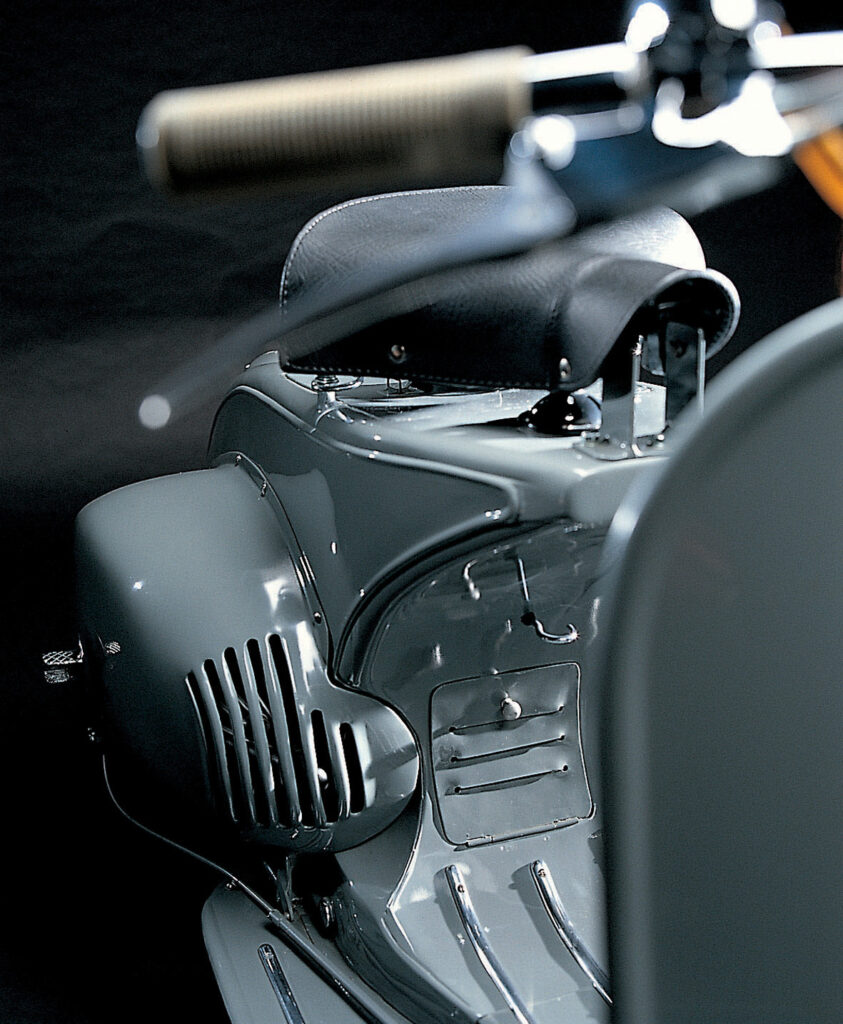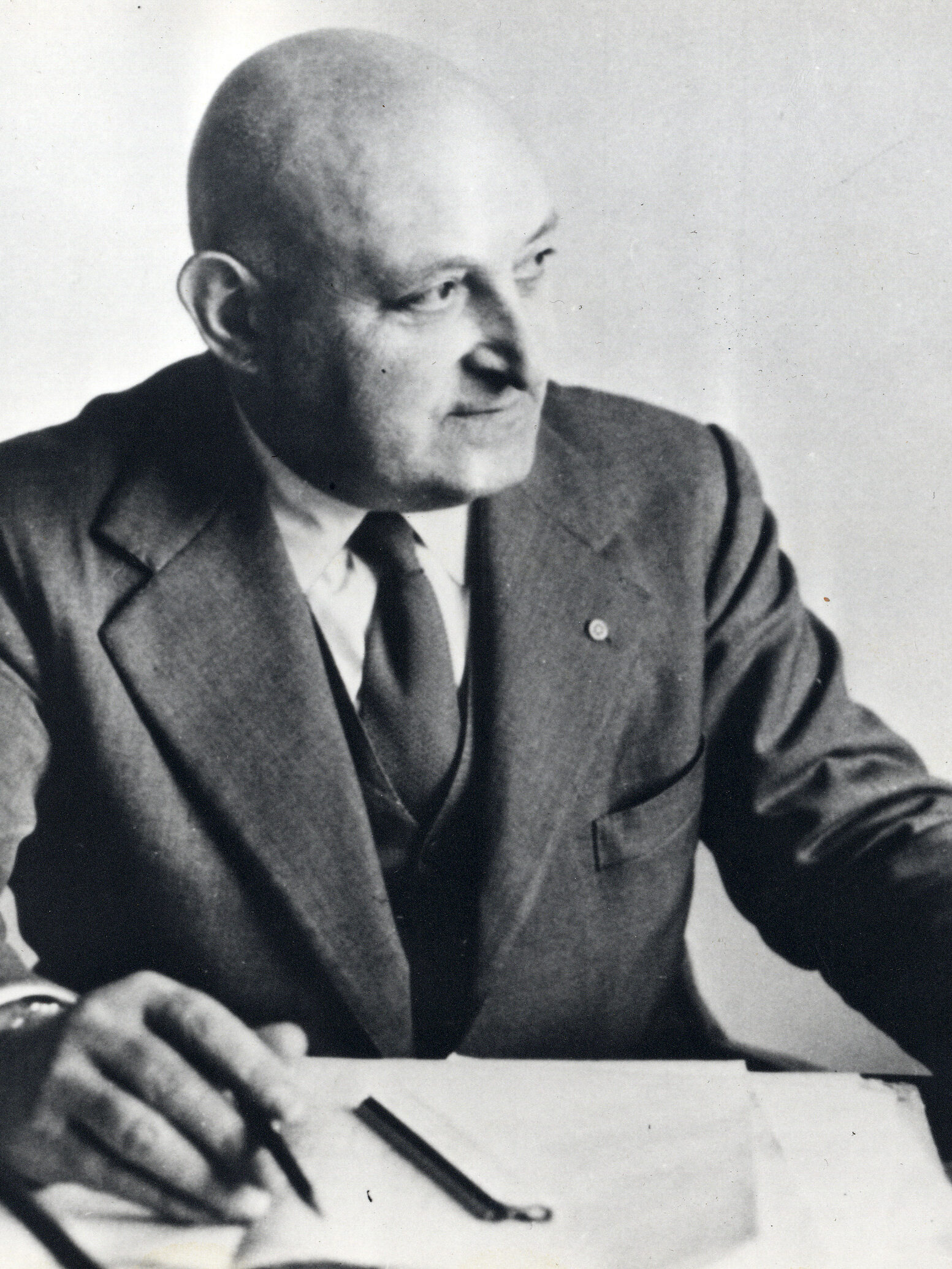The company Piaggio is nowadays universally known for the success scooter Vespa. The Vespa MP6 (Moto Piaggio 6) prototype was first introduced in 1945. It was designed by aeronautical engineer Corradino D’Ascanio, who had previously worked on aircraft designs for the Italian Air Force. Since he was not really enthusiastic about previous scooters, he wanted to create a model for newcomers to scooters.
The MP6 was a significant departure from traditional motorcycle design, with a unique frame and body that made it more stable and easier to handle. Although the MP6 never went into production, it paved the way for the iconic Vespa scooter we know and love today.
Features of the Vespa MP6 Prototype
The Vespa MP6 prototype had several unique features that set it apart from conventional motorcycles. One of the most important innovations was the body design. The absence of the engine fan, the brake lever on the left instead of the right side, the aluminum strips of the running board and the airplane symbol on the front shield are the main differences between the MP6 and later Vespa versions. This design eliminated the need for a separate frame, making the scooter lighter and stronger.
Aeronautical designer D’Ascanio was not a fan of motorcycles, which he considered uncomfortable and bulky vehicles, whose tires were too difficult to change in case of a puncture, and which were dirty, especially because of the drive chain. The engineer found the solution to each problem by drawing on his experience in aviation. Last but not least, he designed a body that would protect the rider from getting dirty or disheveled.
To eliminate the chain, he designed a vehicle with a load-bearing body and direct engagement. To make driving easier, he placed the shift lever on the handlebars; to make changing tires easier, he designed not a fork but a support arm, similar to that on an airplane sled. The MP6 also had a large, bulbous front fender that protected drivers from dirt and debris. The seat was designed to be comfortable – by the standards of the time – to produce the most enjoyable ride possible. The engine was mounted on the rear wheel and was powered by a 98cc two-stroke engine that produced about 3.2 horsepower.

The Legacy of the Vespa MP6 Prototype
Although the Vespa MP6 never went into production, it was an important step in the evolution of the Vespa scooter we know today. The MP6 prototype introduced several innovative features that were later incorporated into the Vespa design, such as the monocoque body structure, the single-sided fork, and the large front fender.
The Vespa scooter quickly became a cultural icon and synonymous with Italian style and design. In April 1946, the first 50 Vespas left the factory halls in Pontedera. Today, Vespa scooters are still manufactured by Piaggio and sold in over 100 countries worldwide. The Vespa MP6 prototype remains an important part of Vespa’s history and represents the company’s commitment to innovation and design.

Conclusion
The Vespa MP6 prototype was a significant innovation in the development of the iconic Vespa scooter. Its unique design features, such as the pressed steel monocoque structure and single-sided fork, distinguished it from traditional motorcycles and paved the way for the modern scooter.
Although the MP6 never went into production, it was an important step in the evolution of the Vespa brand, which has become a cultural icon. The legacy of the Vespa MP6 prototype lives on in the design of modern Vespa scooters, which are still being developed and used by people all over the world.


